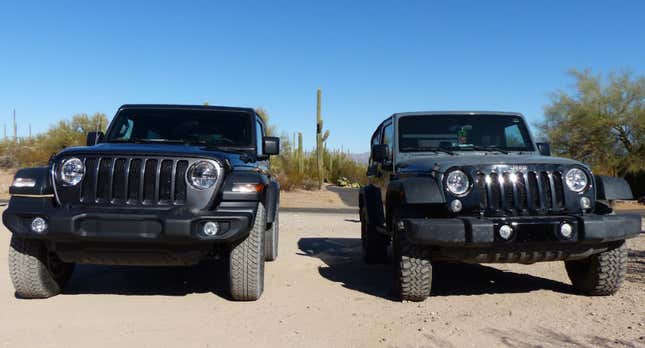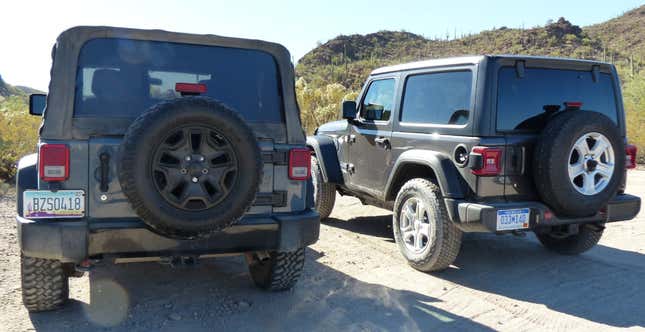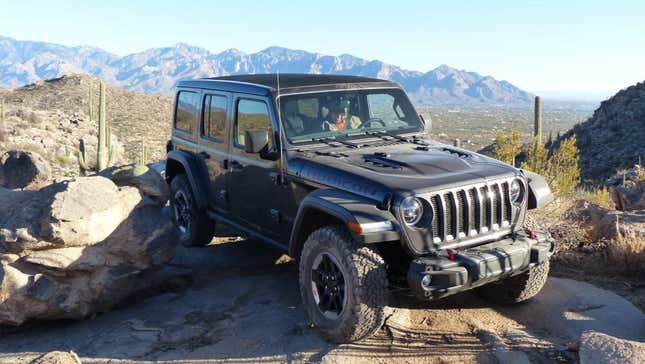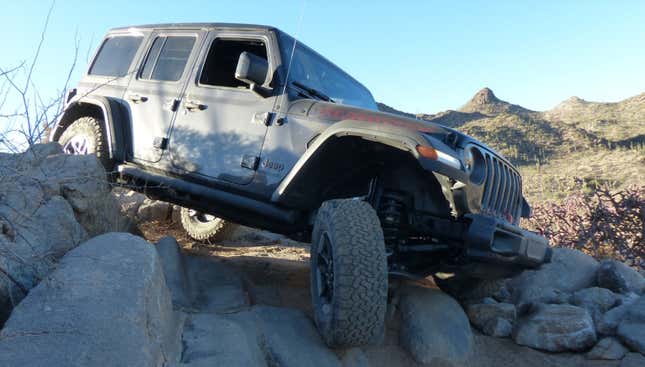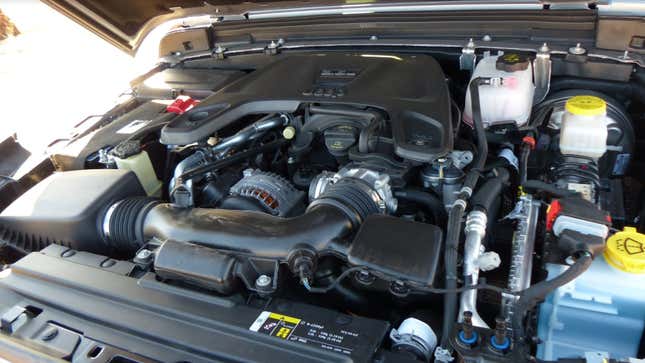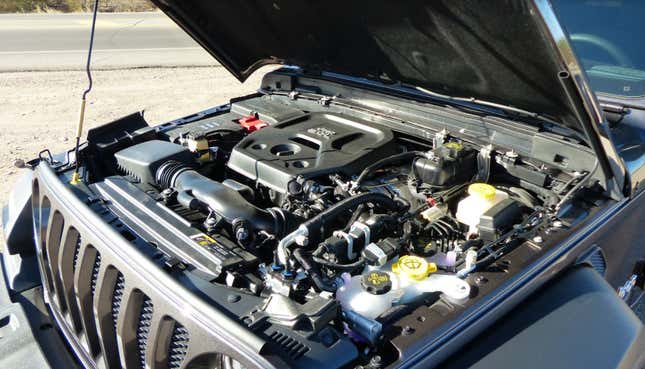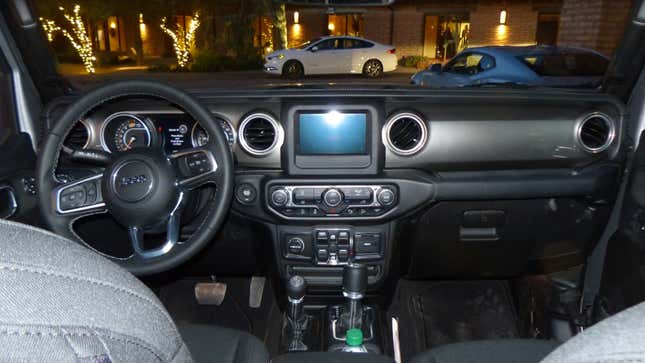The 2018 Jeep Wrangler is easily the most important vehicle to come out this year. (It’s debatable whether the Tesla Model 3 is really “out” yet.) An American icon is being replaced, and fans have been nervous. Is the new Wrangler still a serious off-roader worth worshipping, or has it been watered down like almost every other SUV?
After a day on the rocks with this thing, I’m happy to say: we’re in good shape.
(Full Disclosure: Jeep wanted me to drive the 2018 Wrangler JL, so they flew me to Tucson, Arizona, and shuttled me to a fancy hotel whose nightly rate is more than the cost of a used four-liter inline-six. I also helped engineer the new Jeep—don’t worry, I was well supervised.)
“Death by a thousand cuts” was a warning I heard a lot while working as an engineer on this new Wrangler, known as the “JL.” Those “cuts” represented engineering compromises, and death was a metaphor for the dilution of the Wrangler’s soul—that fragile, unquantifiable something that lures hundreds of thousands of buyers around the world to the lovable off-roader.
The Jeep wouldn’t be alone if it did lose a bit of soul. It seems like every vehicle out now—whether it’s an off-roader or a sport sedan—feels a bit softer, more compromised, more semi-autonomous than its predecessor does.
I couldn’t stop thinking about the idea of these cuts as I sat on my flight from Detroit to the 2018 Jeep Wrangler media drive in Tucson, Arizona. The concerns I had a few years ago when the vehicle was still being developed rushed to my head: the front axle CV joints, the lithium-ion battery pack hanging low off the undercarriage, the front axle disconnect, the fancy electro-hydraulic power steering, the silly power top... had these changes softened Jeep’s truest SUV?
After spending a day driving the new Jeep we’ve been dreaming about for ages, I can confirm that the answer is “absolutely not.”
What Is It?
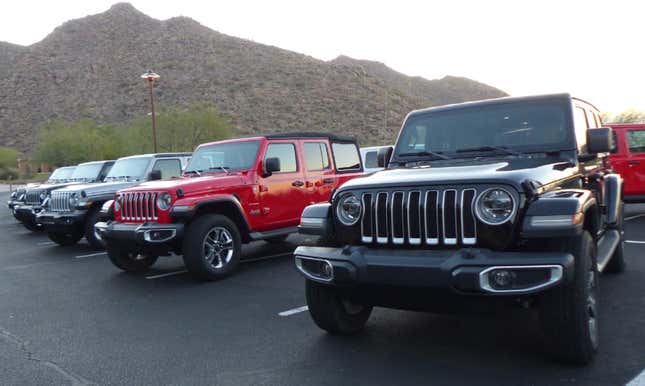
The Wrangler is far and away one of the most off-road capable vehicles in the world. It’s a body-on-frame brute with solid axles, a soft and flexy suspension, available locking differentials, ridiculous torque at the wheels, tons of ground clearance and short overhangs that help it scramble over obstacles.
In many ways the Wrangler, with its folding windshield, removable doors, and convertible top, has no competition. It woos buyers with rich World War II heritage, a fun modular body, insane off-road talents, and a classic, unmistakable design.
It’s a recipe that works so well, Jeep usually goes 10 years between redesigns. But between the outgoing JK and the new JL, the brand went 11.
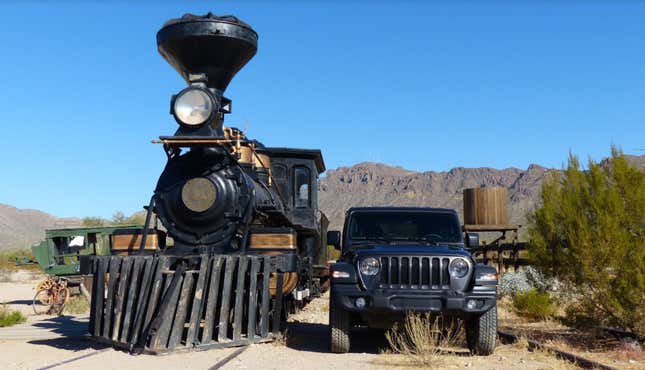
All that time to develop the vehicle brought tons of new features including aluminum doors, hinges, hood, fenders and windshield frame, as well as a magnesium rear swing gate with aluminum skin.
The 3.6-liter Pentastar V6 that had powered the Wrangler since 2012 has been upgraded with two-step variable valve lift and cooled exhaust gas recirculation. Plus, there’s a new 48-volt mild hybrid 2.0-liter turbocharged inline-four joining the mix.
On top of that, the transmissions are all new, the steering is now electro-hydraulic, the whole Jeep is a couple of inches longer, the tops are much more intuitive, the interior is new, the frame is new (and 100 pounds lighter than before in the case of the four-door)... heck, even the door handles got a new design.
Off-Road Capability
Despite being “all new,” the JL is still quintessentially a Wrangler when it comes to off-road capability. Approach, departure and breakover angles—which dictate how aggressively the Jeep can climb, descend and crest slopes without scraping—have somehow gotten significantly better than those of the outgoing Wrangler across all trims. And the last Wrangler was an industry benchmark here.
On the Rubicon model, the numbers go from impressive to downright absurd. The approach angle jumps from 42.2 degrees to 44 degrees, the departure angle climbs from around 32.5 degrees to a massive 37 degrees, and the breakover angle grows to either 22.6 or 27.8 degrees (from 21.2 or 25.8 degrees for the four-door and two-door, respectively). Ground clearance is also up across the board, hopping from between about eight and 10 inches between the diff and the dirt to between about 10 and 11 depending on the trim and tire size.
Practically speaking, that means the Wrangler’s ability to do a mountain goat impression has increased markedly.
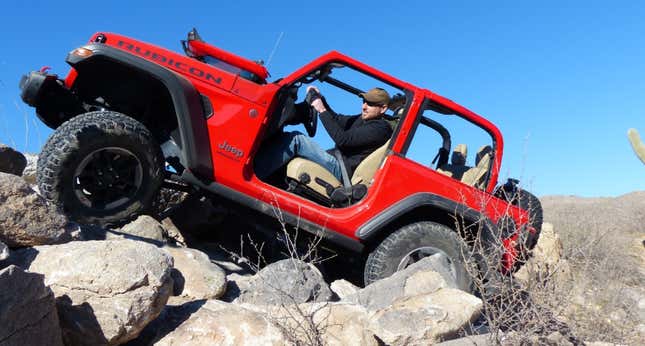
But geometry isn’t the JL’s only off-road improvement over the last Wrangler. The crawl ratios are also much bigger than before. The Aisin D478 manual transmission comes with a granny-like 5.13:1 (up from 4.46:1) first gear ratio; when mated to the 4:1 low-range gear and the 4.10:1 axle ratios found in the Rubicon, that yields a crawl ratio of over 84 (up from 73).
The ZF-based 850RE eight-speed automatic transmission also gets a short first gear ratio at 4.71:1 (up from 3.59:1), yielding in a similarly ludicrous 77.2 crawl ratio (up from 58.9). This all means more torque at the wheels, and thus more forward thrust to get the Jeep up and over steep obstacles.
The results of these improvements are fantastic. While I didn’t get to drive the manual off-road, I did get to try out the eight-speed and I can tell you that—with the shifter mashed into first gear—the Jeep is unstoppable. Those meaty BF Goodrich 33-inch all-terrain tires—when driven by either the 2.0-liter turbo four or 3.6-liter V6—will rotate no matter what stands in their way.
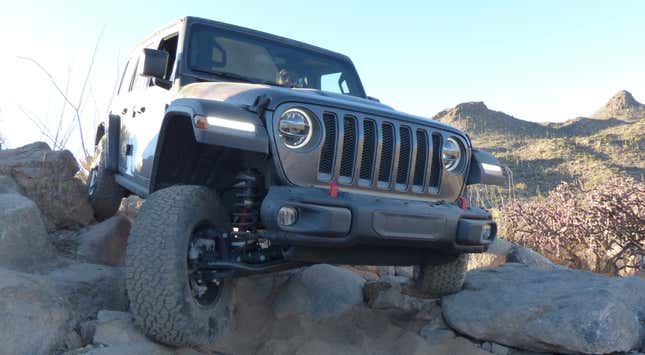
Attached to the steel ladder-frame via track bars and control arms are still two coil-sprung live axles that—especially with the sway bar disconnected—give the Wrangler better articulation than pretty much any other SUV on the market making for a smooth, controllable off-road ride. Between the excellent geometry, great crawl ratios, competent engines and soft suspension, the JL remains a genuine monster on the rocks.
One of my fears going into this as a Jeep “traditionalist” was the CV joints (the part of the axle shaft that allows the wheel to receive torque while simultaneously turning), as they’re harder to fix than U-joints on the trail, and they tend to be more vulnerable. But I learned that those only come on Wrangler Saharas equipped with the optional full-time transfer case (which exists, in part, to pass a stringent Euro NCAP brake test that a part-time system would struggle with). That means most trims, thankfully, will get big, beefy u-joints that can be replaced with nothing more than a big rock and a socket.
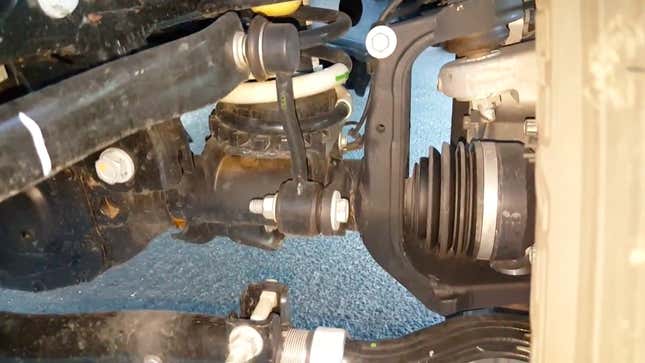
Other Jeepers will complain about the hulking 48-volt lithium ion battery hanging off the belly of the 2.0T, but that’s covered by a chunky skid plate, as is much of the rest of the Jeep’s undercarriage (the gas tank skid plate is now ribbed for extra strength).
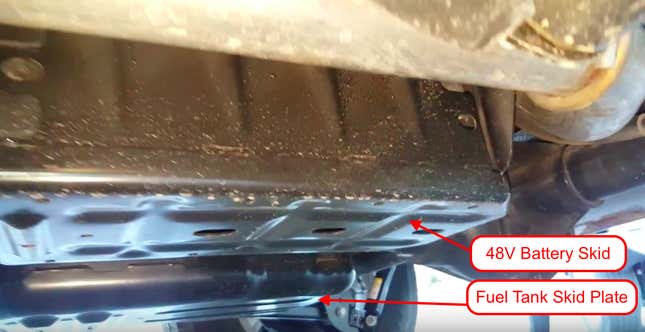
Still others will question the front axle disconnect, which allows the Jeep to drive in two-wheel drive mode without spinning the front driveshaft unnecessarily—a fuel economy enabler. A similar device that used a fork to mechanically join two sections of a halfshaft via a sleeve also existed on old Jeep vehicles like the Wrangler YJ of the late 1980s, though it is not remembered too fondly due to its propensity to fail.
But unlike that system, the new JL’s axle disconnect is not vacuum-controlled, but rather electric, so it should be more reliable. And even if it’s not, I’m sure the aftermarket will come up with a bypass option or even a one-piece axle shaft kit.
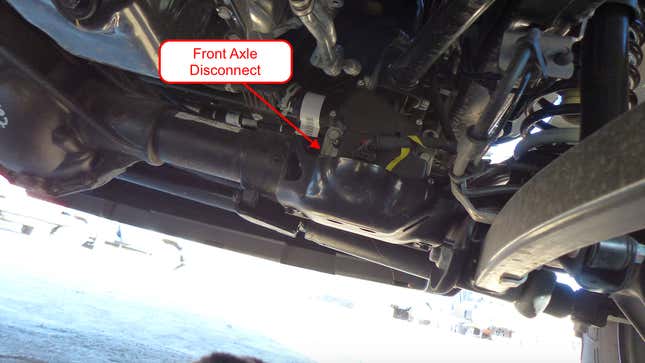
The Wrangler is not perfect, though. I’m not a fan of the flat aluminum wheels that easily gather scratches off-road (a little more “dish” would be nice), and I’m still unsure what I think about an automatic transmission with no dipstick (it’s technically a “fill for life” setup, but there’s just something comforting about checking fluids on a vehicle you just beat on off-road—especially if there was water involved).
Still, my worries about the JL being even slightly watered down have been placated, bringing me to the question: is the JL is better and tougher than the outgoing JK off-road?
Unfortunately, I didn’t get nearly enough seat time to answer that, and it will probably take a few years to know definitively which one is tougher. But I can tell you that they’re both phenomenal straight from the dealer’s lot.
On-Road Driving
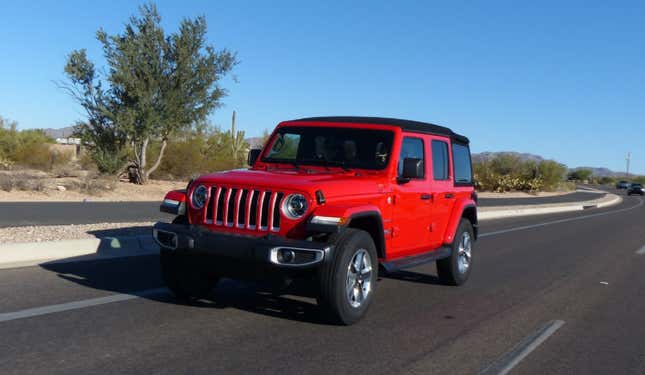
The first 2018 Wrangler I got behind the wheel of was a fairly basic two-door Sport model propelled by a 2.0-liter GME-T4 “Hurricane” turbo with “eTorque.”
Another name for a mild hybrid system; eTorque replaces the alternator with a Motor Generator Unit that charges the 12-volt battery, sends torque to the engine’s crankshaft via the accessory belt, and turns the vehicle’s forward motion into current for the liquid-cooled 48-volt lithium-ion battery.
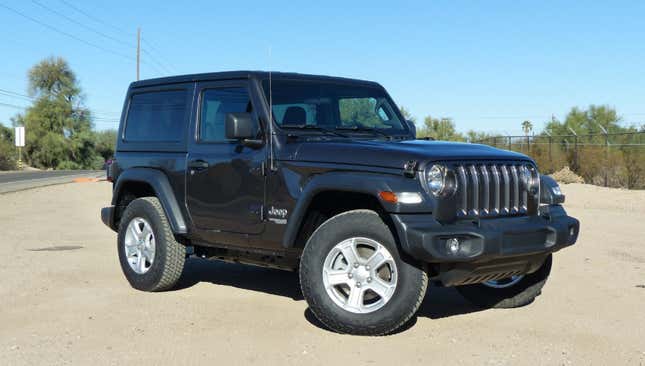
I didn’t really notice any “boost” from that MGU. And if I’m totally honest, I had trouble differentiating between that 2.0-liter turbo and the 3.6-liter V6. The Pentastar upgrade supposedly makes 15 horsepower more at 285, but the 2.0-liter has an advantage of 35 lb-ft of torque at 290.
The difference to me wasn’t particularly stark. I could occasionally hear a bit of noise from the turbo, and the MGU made for smoother engine stop-start events, but otherwise the 2.0-liter sounded and behaved more like the V6 than I expected.
Not being able to immediately tell the difference between the two engines isn’t a bad thing, though, since the little 2.0-liter should provide better fuel economy than the 3.6-liter automatic’s 18 city, 23 highway, 20 combined. That means, aside from whatever the addition cost is over the 3.6, the little engine could be the no-compromise choice for fuel economy-minded folks who strangely found themselves looking at Jeep Wranglers. But until I know the four-banger’s figures and spend more than just a couple of hours behind the wheel, I can’t say I have a powertrain preference.
I will say that both, when bolted to that ZF-based eight-speed, accelerated the Still Rather Heavy Jeep (the two-door weighs at least 3,970 lbs and the four-door weighs more than 4,485 lbs!) like a rocket ship... relatively speaking.

But even if there’s a solid automatic mated to a turbo engine, the enthusiast’s choice remains the manual, which comes only attached to the 3.6-liter Pentastar Upgrade V6.
The throws are now 50 percent shorter than the Wrangler’s last stick, the shifter (which does feel like it requires a bit of a reach to the right) no longer vibrates thanks to cable actuation. The shift pattern is different than before, the reverse gear “crash through” has been replaced by a red collar, and—thank the Jeep gods—the clutch throw is much, much shorter.
Honestly, the JL’s manual trans feels like it belongs in something significantly sportier than a stick-axle’d box on wheels. And while I still prefer the outgoing NSG370 manual, I’m also a sick, sick man who loves when his Jeeps feel like tractors.
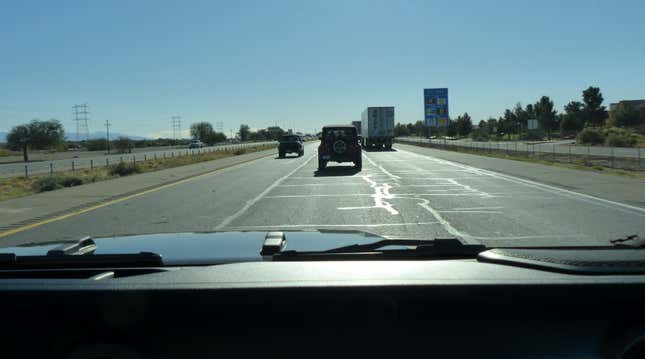
For on-road use, the 2.0T and V6 engines and transmissions are both solid. The ride, on the other hand, leans a bit more towards liquid. After driving the Sport model—which looks different than the other trims thanks to a closeout panel between the front bumper and the fender (a late aero add) and unique taillights—on the highway, I realized right away that I was still driving a Wrangler.
The suspension is soft, meaning brake dive and body roll are still there—a byproduct of the off-road oriented solid axle-based suspension. And there’s still quite a bit of wind noise compared to other mid-size SUVs. These are hardly surprising revelations, but if you were wondering if the JL turned into a cushy crossover, the answer is “no.”
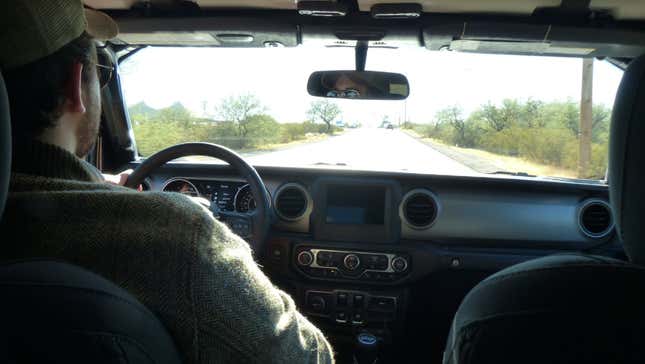
What is cushy (but not too much so) though, is the interior. It’s much more modern than the outgoing JK’s, which was designed for the 2011 model year. Anyone who’s driven one will probably remember that the dash already looks old, too, with its retro 14-segment displays.
The new Wrangler’s interior is not only attractive, but it’s comfortable. Particularly for the rear passengers, whose seat back is no longer essentially vertical, and who no longer have to freeze their butts off thanks to the new rear HVAC duct.
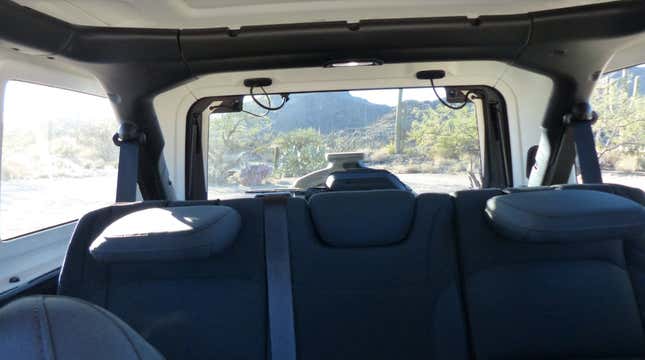
The best thing about the interior—and indeed, the single thing that I like best about the new Jeep over the outgoing JK—is the visibility. I know it seems like a small point, but it transforms the inside of the Jeep and makes it feel airier than any SUV from this decade has any right to feel.
The lower spare tire, the bigger glass panes, the wiper arm mounted at the bottom of the rear glass instead of the top, and the rear headrests that fold all contribute to excellent visibility that is even augmented with a solid backup camera. Both on road and off, the improved visibility is a godsend.
Value
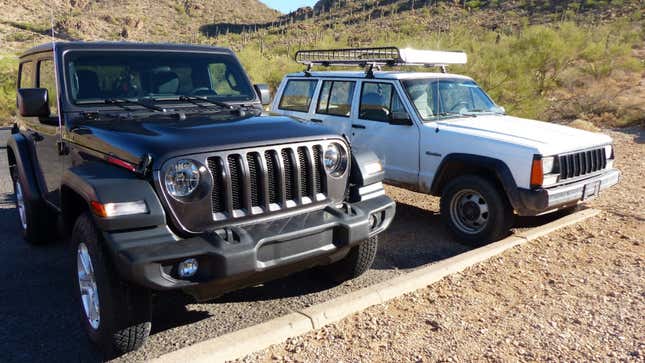
As far as ever more expensive new cars go, the Wrangler starts out affordable. The Sport costs $26,995 in two-door guise or $30,495 as a four-door. If you want the lockers and 4:1 transfer case, the Rubicon will cost you $36,995 as a two-door or $40,495 as a four door.
In some ways it’s hard to assess whether the prices represent a good value, because there’s really no other SUV that compares to the JL. Its only true competition is its predecessor, which costs about $3,000 less. Whether it’s worth it to buy the new generation depends on how much you value the copious incremental improvements over the outgoing model. I myself—as someone who would probably buy a base stripper model—could go either way. But if you don’t daily drive a rusted-out $600 “Beater With A Heater” like I do, you might find the JL’s niceties to be worth it.
Early Verdict
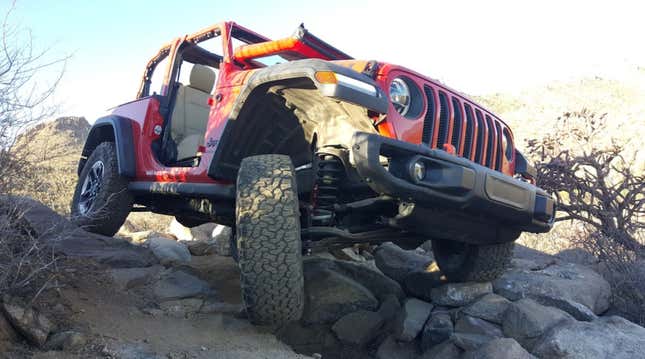
After driving the JL, which launches with the V6 in the first quarter of 2018 and with the turbo-four in the second quarter, all of my worries disappeared. The interior is fantastic, the tops are so much better than the outgoing ones, the windshield folds down in a cinch, the doors come off more easily, and the visibility is phenomenal.
The hardcore Jeeper in me noticed that the electro-hydraulic power steering worked great off-road, the low-hanging battery pack seemed adequately protected (plus, there’s always the 3.6-liter if you want to forgo it), the CV axles aren’t a worry if you don’t opt for the full-time transfer case, and the axle disconnect worked well. And again, will likely see some sort of bypass from the aftermarket.
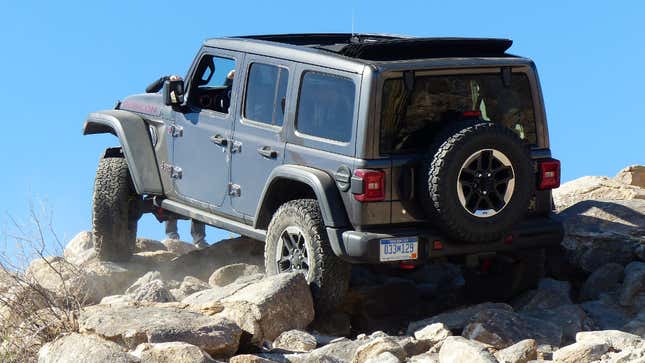
The new-for-2018 features read like the answer to so many Jeepers’ prayers: a leaned back rear seatback, a check strap stopping the doors from flopping around, a lowered spare tire and wiper motor for better visibility, improved fuel economy, a more advanced interior with better infotainment options as well as safety features like Blindspot Monitoring, vents in the fenders to stop the hood from buffeting, brighter headlights, a manual transmission shifter that doesn’t vibrate, a clutch without such enormous throws... and so many other small improvements.
Never before have I driven something whose incremental improvements over its predecessor made such a dramatic difference. The JK was already great; but based on my short time behind the wheel, the JL feels like a masterpiece.
